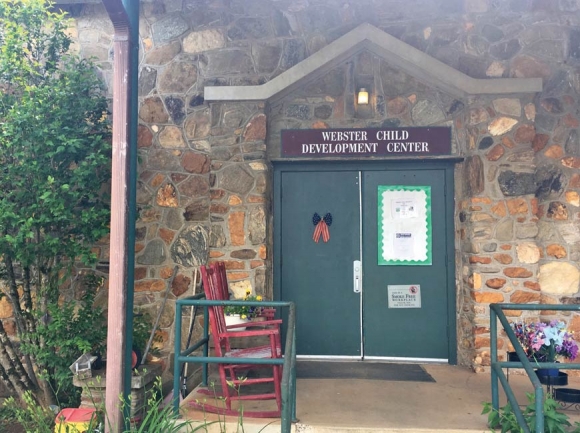Jackson seeks homeless shelter manager
 The Southwestern Child Development Center is serving as the interim shelter manager, but its leaders told commissioners it can’t serve in the role long-term. Holly Kays photo
The Southwestern Child Development Center is serving as the interim shelter manager, but its leaders told commissioners it can’t serve in the role long-term. Holly Kays photo
Before Jackson County commissioners can answer the question of whether Jackson should have a permanent, year-round homeless shelter building, they’ll have another decision to make: if such a shelter existed, who would manage it?
Last year, the nonprofit Neighbors in Need transitioned management of the cold-weather shelter — which uses rented motel rooms to house clients, as the county does not have a dedicated shelter building — to the Southwestern Child Development Center. Coming out of their first winter as shelter managers, the child development center’s leaders let county commissioners know that, while they’re willing to fill in for now, they won’t be able to manage the shelter long-term.
“It’s quite hard to do it well,” said Sheila Hoyle, executive director of the center, during a May 15 commissioners work session. “If we do it, we want to do it well.”
“It’s not because they don’t wish to provide services to the homeless,” County Manager Don Adams clarified to commissioners. “It’s because it consumes quite a bit of managerial time.”
The child development center was originally chosen to take over shelter management because the organization had previously served as the entity to apply for grant funding to cover a case manager. Last year marked the first time that the shelter used a year-round case manager rather than staffing that position only during the cold-weather months.
“During the off-season of the cold weather, we were still seeing clients and providing some sorts of services as we could,” said Marilyn Chamberlain, director of operations at the child development center.
Related Items
Between April and November of 2017, Chamberlain told commissioners, the shelter helped 74 individuals, including 34 children, and found housing for 65 percent of households served. Between November 2017 and April 2018, she said, the shelter served 104 individuals, 23 of them children, finding housing for 32 percent of households. Chamberlain told commissioners that it’s typically harder to house clients in the winter, as housing tends to open up in the spring.
The percentage of clients who were children was lower in 2017-2018 than it has been in the past, Chamberlain said.
“There is a trend in the current year that we see fewer children in the shelters,” she told commissioners. “We also saw more chronic homelessness.”
That’s a trend that’s been consistent statewide, she said, and if it holds it would offer another reason why the child development center should eventually get out of the shelter business — when the organization originally got involved, it was with the idea of helping children impacted by homelessness.
“The first year we served there were many children that were part of the homeless families,” Hoyle said.
However, she emphasized, the center wants to do its part to help with the homelessness problem and doesn’t want to leave the county adrift.
“If you’re pleased with our services, we’re pleased and willing to go forward again for another year,” said Hoyle, provided that personnel issues are taken care of. Last year the shelter had an issue with the person hired for case management leaving halfway through the grant cycle.
Adams suggested that commissioners give some serious thought to how the county could best fill the shelter management gap, permanently.
“Until we have an entity that’s willing to work with us long-term to deal with the challenge, it’s hard to discuss a permanent model,” Adams said. “If we don’t have an entity willing to run it, whether we have a physical homeless shelter or not is not necessarily priority one.”
Hoyle congratulated commissioners on having taken “all the steps in the right order in the right way” to find a permanent solution but acknowledged that “it’s just a very difficult issue for a community to come together around.”
The child development center has rallied some collaboration when it comes to funding. The $130,000 budget for 2017-2018 came from a total of six different sources, including Jackson County, the Evergreen Foundation, The Church of God, the Great Smokies Health Foundation, HUD and Jackson County Neighbors in Need. The county provided the bulk of the funding, at $88,780.
“One of the things we’ve been most pleased about in this project is the way we’ve been able to bring multiple funding sources together,” Hoyle said.
During their May 21 meeting, the county approved a request of $30,180 to fund remaining shelter costs for the fiscal year. The proposed 2018-2019 budget includes $85,000 for the homeless shelter.
Shelter managers last came before commissioners in January, when Chamberlain presented a report from the task force commissioners had formed to research the pros and cons of different approaches to serving the homeless. The report found that few counties Jackson’s size even have a homeless shelter, but that shelters in most comparable counties that do have one are open year-round and have a dedicated building, with not a single hotel model like Jackson’s in sight. Few of the shelters received state or federal funding, and none were run solely be a government entity — half were linked to religious organizations and half were linked to general nonprofits.
While the county has taken the lead on addressing the homelessness issue, commissioners seem to agree that any long-term solution will require significant buy-in from stakeholders outside of county government.
By the numbers
Clients served April to November 2017*
• 74 people served
• 34 children
• 40 adults
• 32 new clients and 42 continuing from the shelter period
• 43 households
• 65 percent of households found long-term housing
Clients served November 2017 to April 2018
• 104 people served
• 63 people sheltered and 41 housed quickly or referred elsewhere
• 23 children
• 81 adults
• 16 rooms per night average, $41.54 per room
• 61 households
• 32 percent of households found long-term housing
* No shelter was provided during these months, but a case manager worked with families to find them housing and other services.









